The wheelchair clinic deals with patients with a variety of conditions, not just stroke. It provides specialist service, as each wheelchair has to be adapted to fit to the patient’s size and particular needs. Some chairs are self-propelled, some are electrically-powered and some are ‘assisted’ (i.e they have to be pushed).
Four weeks after the stroke, I began to be able to move the toes on my right foot, and then, after I was transferred to the neuro-rehab ward, the physios really got started on teaching me to walk again, bit by bit. I was also issued with an electric wheelchair - operated with a mini joystick in my left hand. It had the top speed of a snail and was wayward in reverse but it did give me a measure of independence.
Seven weeks after the stroke, I took my first – very wobbly – steps, supported by two physios. It was VERY scary. After that, though, I gradually improved - and I was even taught to go up and down stairs. At eleven weeks I was ‘licensed’ to walk on the ward unsupervised - and the electric wheelchair was returned to the wheelchair clinic.
Meanwhile, I had indicated to the occupational therapist that I wanted to be able to use my SLR camera again. This was going to be tricky because there was no movement in my right hand or arm - and all cameras are right-handed. I had already experimented with using a disposable camera one-handedly - you turn the camera upside down and use your thumb on the button! - but I really wanted to be able to use a ‘proper’ camera. But SLRs are heavy, so it was only going to be possible with a tripod. But how would I get on with loading film or operating the two-stage fiddly controls – or pressing the shutter with the ‘wrong’ hand? In any case, where could I go to take pictures without compromising other patients’ privacy?
Eventually, it was arranged for me to spend a morning in the wheelchair clinic on a day when it was quiet. There were dozens and dozens of wheelchairs … of so many types, models, adaptations and sizes … waiting … At the end of a corridor filled with wheelchairs, there was a sign on a locked door saying, ‘No Way Out’….
It was exhausting work. It still took me a lot of effort and concentration to stand, let alone walk - and I hadn’t yet been taught how to get up off the floor if I fell. Also, none of the wheelchairs seemed to have brakes applied, so I couldn’t rely on them for support … and there was no one to help if I got into difficulties. But I did succeed in getting the camera to work, I did take the pictures and I didn’t topple over. A small triumph.
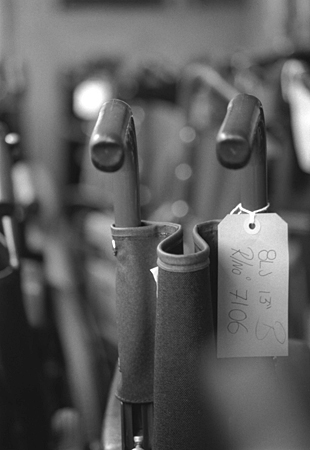
No Way Out - (wheelchair clinic) 1 (2002-2009), b/w photograph
In a corridor there are dozens and dozens of wheelchairs of many types, models, adaptations and sizes … not needed ...yet.
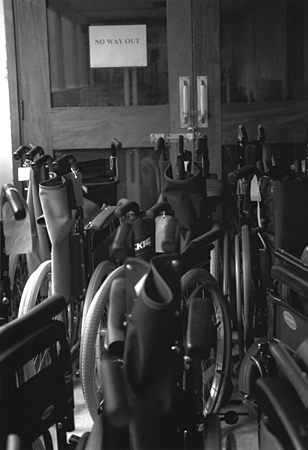
No Way Out - (wheelchair clinic) 2 (2002-2009), b/w photograph
At the end of a corridor completely filled with wheelchairs, there was a sign on a locked and chained door. It said, ‘No Way Out’. I am very thankful that for me that is not true.
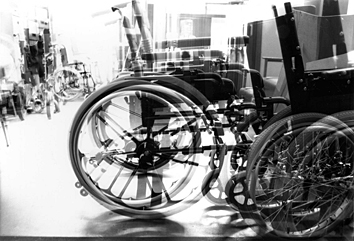
Waiting - (wheelchair clinic) 1 (2002-2009), b/w photograph
In the wheelchair clinic there are dozens of wheelchairs - some electric, some self-propelled, some assisted - waiting for human bodies to fill them.
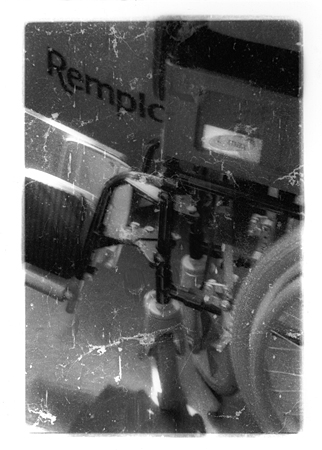
Looking behind the surface - (wheelchair clinic) - 1 (2002-2009), b/w photograph
As with strokes, every body is different, with different needs, different stories
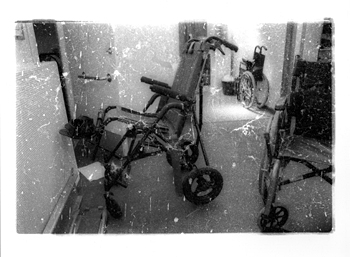
Looking behind the surface - (wheelchair clinic) - 2 (2002-2009), b/w photograph
As with strokes, every body is different, with different needs, different stories
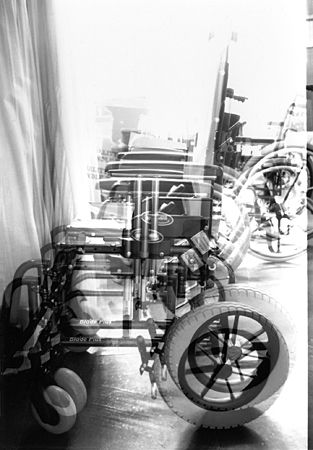
Waiting - (wheelchair clinic) 2 (2002-2009), b/w photograph
In the wheelchair clinic there are dozens of wheelchairs - some electric, some self-propelled, some assisted - waiting for human bodies to fill them.
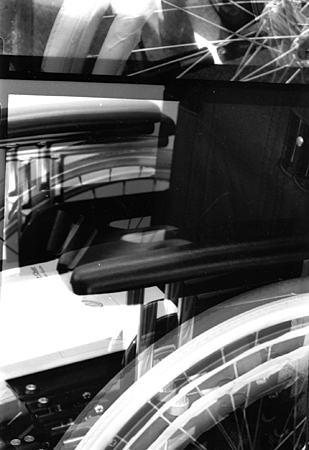
Waiting - (wheelchair clinic) 5 (2002-2009), b/w photograph
In the wheelchair clinic there are dozens of wheelchairs - some electric, some self-propelled, some assisted - waiting for human bodies to fill them.








